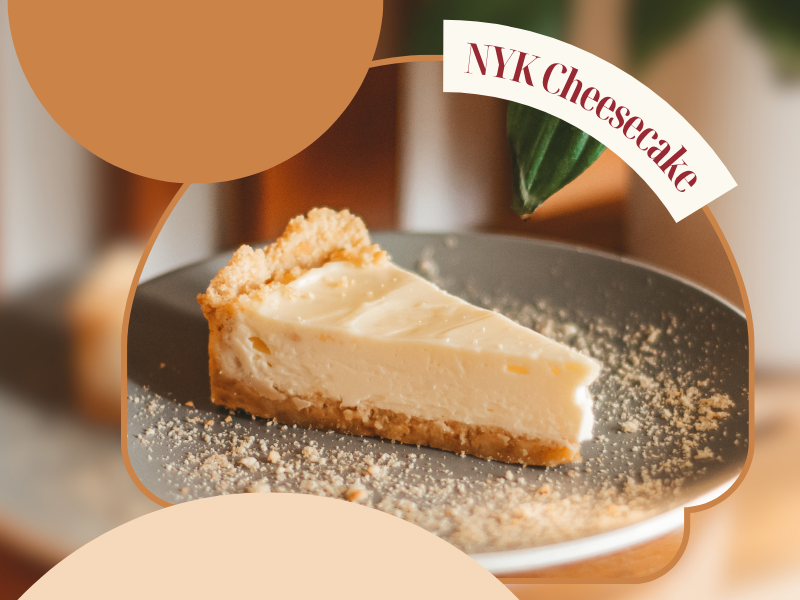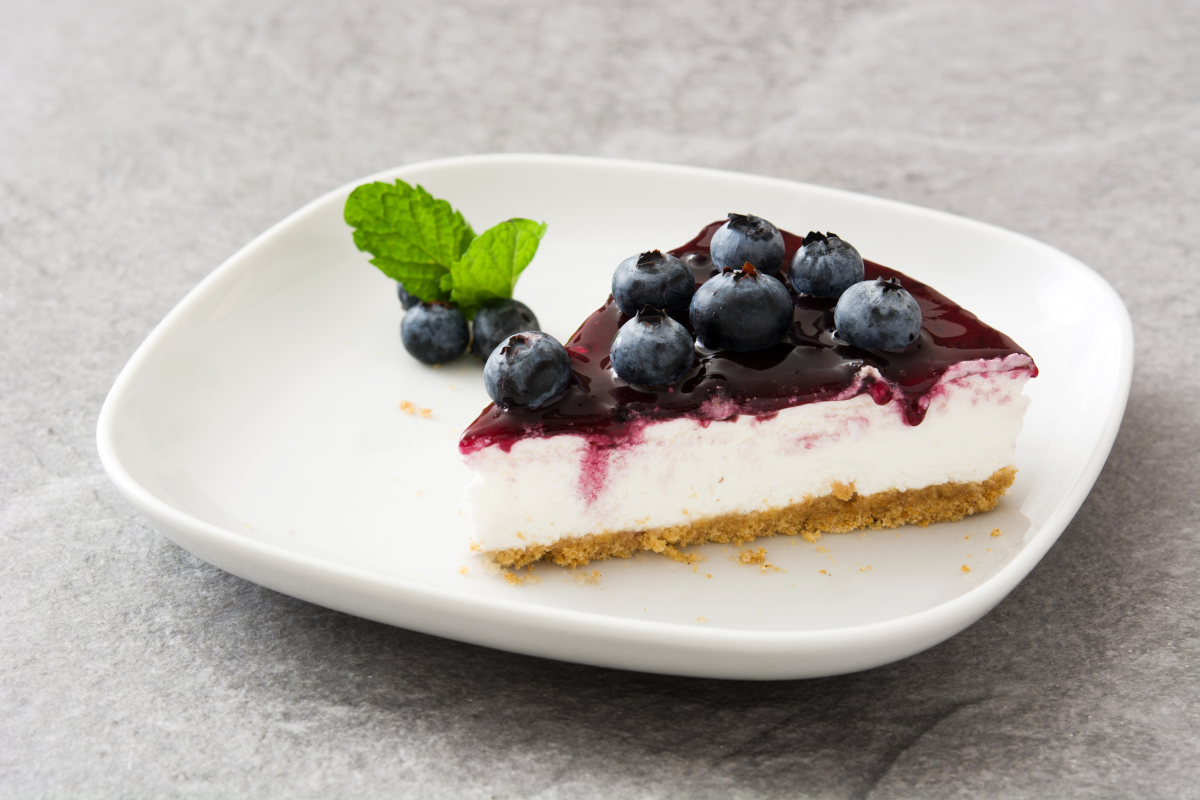A slice of cheesecake exudes a timeless charm. Silky, velvety, and indulgently opulent—it is the dessert that remains continuously popular. The perfect cheesecake may be like walking a culinary tightrope, though, so keep that in mind. Fractured surfaces, wet crusts, and depressed centers? We have all encountered the circumstance.
Do not be anxious, sweet lovers. This detailed guide will walk you through each part of the cheesecake-making process, regardless of your baking expertise. From crust to chill, we give practical tips, common blunders, and professional secrets.
Essential Ingredients for Achieving the Perfect Cheesecake
Wonderful cheesecake starts with wonderful ingredients. Quality matters—this is not the time to take shortcuts.
Cream Cheese
The star of the show. Always go for full-fat cream cheese. Avoid low-fat versions—they just don’t have the same richness or mouthfeel.
Sugar
Granulated sugar is typical, but superfine sugar dissolves more smoothly and helps produce a velvety texture.
Eggs
Eggs bring everything together and give structure. Bring them to room temperature before combining to avoid lumps.
Sour Cream or Heavy Cream
This gives that characteristic creaminess and mild tang. It also softens the texture for a melt-in-your-mouth experience.
Graham Crackers or Digestive Biscuits
For the crust, broken cookies or biscuits coupled with melted butter provide the perfect crispy foundation.
Vanilla Extract
A modest dash, but a tremendous impression. Use pure vanilla for optimal results—it enhances all the tastes without overwhelming them.
Detailed Instructions for Cooking the Crust and Filling

Step 1: Make the Crust
Crumble graham crackers (or your cookie of choice) till fine. Mix with the melting butter and a sprinkle of sugar, then press gently into the bottom of a small pan. Bake for ten minutes at 325°F (160°C) until set.
Step 2: Blend the Filling
Whip the cream cheese until smooth and foamy. Add sugar and mix completely. Then, add eggs one at a time, combining gently. Finally, mix in sour cream or heavy cream and vanilla extract.
Pro Tip: Don’t overwork. Overbeating the batter can cause air bubbles that lead to breaks.
Step 3: Pour and Tap
Pour the filling onto your pre-baked crust. Tap the pan lightly on the counter to release any trapped air bubbles.
The Importance of a Water Bath in Cheesecake Baking
Here’s the method that divides novice cheesecakes from bakery-level masterpieces: the water bath
Why it matters:
- Prevents cracking by supplying gentle, homogeneous heat.
- Maintains moisture during baking.
- Ensures a smooth, creamy texture from edge to center.
How to do it:
Wrap the bottom of your springform pan with aluminum foil (to stop leaks). Place it in a larger roasting pan and pour in hot water until it comes halfway up the side of the pan. Then bake.
Trust us—this one step makes a world of difference.
Common Mistakes to Avoid When Achieving the Perfect Cheesecake
Even with the greatest recipe, a few blunders might wreck your cheesecake aspirations. Here’s what to keep away of:
❌ Overmixing
It adds air into the batter, which generates ugly fissures.
❌ Skipping the Water Bath
We said it once, we’ll say it again—it’s a non-negotiable.
❌ Opening the Oven Door Too Often
This creates abrupt temperature swings that lead to sinking or cracking.
❌ Overbaking
The middle should still wobble slightly when you gently shake the pan. Cheesecake continues to cook as it cools.
❌ Not Letting It Cool Gradually
Sudden cooling might cause the top to break. Once baked, turn off the oven and let it remain with the door slightly ajar for an hour before removing
Cooling and Chilling: Achieving the Perfect Cheesecake
You’ve baked it, it feels amazing… but wait! Avoid hurrying through this final step.
Step 1: Cool Gradually
After baking, let the cheesecake chill in the oven (turned off) with the door open slightly for approximately one hour. Then place it to a wire frame to cool at the room temperature.
Step 2: Chill Completely
Wrap your cheesecake and chill for at least 6 hours—preferably overnight. This helps the texture firm up and tastes to settle.
Step 3: The Knife Trick
Before slicing, put your knife in hot water and wipe between cuts for clean, picture-perfect slices.
Serving and Topping Ideas for Your Cheesecake
Now comes the most exciting part: modifying your cheesecake into a show.
- Fresh fruits.
Top with berries, mango, or kiwi for a delicious and tangy contrast.
To add a luxury touch, sprinkle or pour a smooth chocolate ganache on top.
- Lemon zest/curd
Adds a burst of brightness and improves the flavor.
- Caramel with nuts
Salty caramel with roasting nuts or almonds makes a sweet-salty bite.
- Edible flowers or whipped cream with flavor.
For a luxury finish, add edible flowers or a spoonful of vanilla whipped cream.
Pro Tip: If the cheesecake you made is rich, keep your toppings minimal to maintain balance.
Storing Leftover Cheesecake: Best Practices
If by some chance there are leftovers (hey, it happens), here’s how to preserve them taste fresh:
- Fridge Storage:
Store in an airtight container or cover the cheesecake with plastic wrap or foil.
It’ll stay up to 5 days in the fridge without losing texture.
- Freezer Storage:
Freeze slices individually for quick nibbling.
Wrap securely in plastic and foil, then store in a freezer-safe bag.
Thaw overnight in the fridge before serving.
- Freezing tip:
Cheesecake really freezes beautifully—just avoid fruit-topped types if you wish to freeze.
Final Thoughts: Your Cheesecake Era Starts Now
Baking a cheesecake may sound overwhelming, but with the appropriate technique, it’s perfectly doable—and wonderfully satisfying. From picking the correct ingredients to refining the bake and nailing that cooled, creamy slice, every step is an opportunity to create something spectacular.
So next time you’re craving dessert, skip the bakery. Roll up your sleeves, grab that springform pan, and make a cheesecake that’s all your own. After all, the ideal cheesecake isn’t simply a dessert—it’s a victory.

